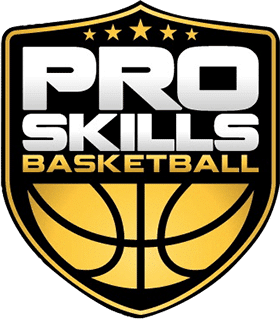
How to Play Low Post in Youth Basketball
By Logan Kosmalski | Former Davidson Player, Co-Founder of Pro Skills Basketball
In today’s game, post play has evolved. The dominance of traditional big men like Hakeem Olajuwon and Kareem Abdul-Jabbar has given way to stretch forwards and lob threats. Youth basketball often mirrors this trend, favoring guard play and fast-paced offense.
At Pro Skills Basketball, we believe there’s still a place — and a need — for skilled post players. Developing a back-to-the-basket threat can give your team an edge and help players carve out a unique role, even in today’s guard-centric game.
Here are 5 essential tips for youth post players to thrive in the low post.
1. Play Low and Wide
Post footwork starts with a solid foundation. A strong, balanced stance allows young post players to hold their ground and absorb contact. Instead of standing tall and losing leverage, youth players should get low, stay wide, and be strong with the ball.
Yes, it burns the legs — but it builds strength, balance, and toughness, all critical for success in the paint.
2. Slow Down and Be Deceptive
Youth post players often rush once they catch the ball. But the best bigs are calm, patient, and deceptive. Learning to change pace, use fakes, and read the defense can separate good post players from great ones.
Coaches: take the time to teach your post players how to get open, seal defenders, and survey the court before making a move. As a player, learn to embrace the chaos of reaching defenders and stay composed under pressure.
3. Use Both Hands
Many youth post players rely too heavily on one move or one hand. That’s a recipe for predictability.
Players must work on scoring over both shoulders and finishing with either hand. Yes, it’s frustrating to miss shots in practice, but that’s how improvement happens. Coaches and parents should encourage consistent reps, even when results aren’t perfect.
4. Embrace Contact
The post is a physical place — and that’s okay. In youth basketball, many players shy away from bumps, elbows, and body checks. But physicality is part of playing in the post.
Whether it’s a drive to the hoop or fighting for positioning, players must embrace contact, not avoid it. Staying strong with the ball and learning to initiate contact without fouling is a critical skill for post player development.
5. Run the Court and Crash the Glass
Effort-based skills matter. Two ways young post players can instantly impact a game? Sprint the floor and crash the boards.
Even if you’re not getting post touches, running hard in transition leads to easy buckets. Offensive rebounds can be game-changers, but they require persistence and refusal to be boxed out. Use spin moves, swim techniques, and relentless energy to grab extra possessions.
Remember: if you want the ball, go get it.
Final Thoughts
Post players may not get the same attention as guards in today’s game, but they remain essential — especially when they can defend, rebound, and score in the paint.
At Pro Skills Basketball, we help youth players develop their full game, whether they’re future point guards or dominant post presences. With the right training and mindset, bigs can thrive — even in a fast-paced AAU world.
📩 Contact us at admin@proskillsbasketball.com
📞 Call us at 866-996-3888


 HOW TO: 2-HAND FORM SHOOT IN BASKETBALL
HOW TO: 2-HAND FORM SHOOT IN BASKETBALL »
»